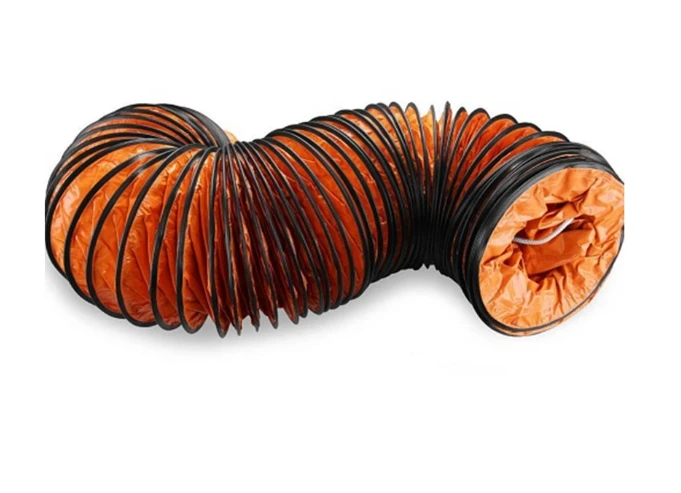difference between pipe tube and hose
Understanding the Differences Between Pipe, Tube, and Hose
In the world of fluid transport and engineering, the terms pipe, tube, and hose are frequently used, yet they each refer to distinct products with specific applications and characteristics. Understanding the differences between these three types of conduits is essential for choosing the right component for any given application—from plumbing and construction to HVAC systems and automotive engineering. This article explores the differences in terms of design, materials, applications, and specifications.
Definitions and Characteristics
Pipes are typically cylindrical tubes designed to transport fluids or gases. They are generally rigid and are measured by their internal diameter (ID). The primary purpose of pipes is to convey substances across significant distances, often under pressure. Because they usually feature standardized sizes, pipes can be easily connected with fittings, which makes them ideal for plumbing systems and industrial applications. They are available in various materials, including metals like steel and copper, as well as plastics such as PVC and HDPE, which are selected based on the nature of the fluid being transported and environmental conditions.
Tubes, on the other hand, are also hollow cylinders but are more focused on structural applications and often come in more precise dimensions. Tubes are measured by their outer diameter (OD) and wall thickness, providing a more uniform specification for industries like construction and manufacturing. They can be found in various shapes (e.g., round, square, rectangular) and can withstand higher pressures, allowing them to serve as structural elements in buildings or as frames in machinery. Tubes typically have a cleaner finish and are often made from materials like stainless steel, aluminum, or high-strength alloys.
Hoses are flexible tubes that transport fluids, often in environments where movement or vibration might occur. Unlike pipes or tubes, hoses can bend and are usually made from softer materials like rubber, silicone, or thermoplastics, providing versatility and ease of handling. Hoses are often fitted with connectors or couplers on both ends, which allows them to be attached to various equipment or components, such as engines, agricultural machinery, or industrial systems. They come in different sizes and pressure ratings, designed for specific applications ranging from low-pressure systems to high-pressure hydraulic systems.
Applications
The distinctions between pipes, tubes, and hoses extend into their applications as well.
- Pipes are predominantly used in water supply, sewage systems, and industrial applications. They can manage high internal pressures, making them suitable for transporting broad quantities of gas or liquid across long distances with minimal leakage. - Tubes find their primary use in applications requiring precise and narrowly defined tolerances, such as in medical devices, automotive systems, and aerospace applications. Tubes can be engineered for structural integrity, heat exchange, or fluid flow, depending on the design and materials used.
difference between pipe tube and hose

- Hoses excel in applications where flexibility and mobility are paramount. From garden hoses for home use to hydraulic hoses in heavy machinery, their ability to bend without breaking makes them indispensable in dynamic environments. Additionally, hoses often serve specific tasks such as fuel lines, coolant lines, and air conditioning systems.
Material Considerations
The material choice for pipes, tubes, and hoses greatly influences their performance
.- Metal pipes are robust and can withstand high pressures and temperatures, making them ideal for industrial applications. However, they can be heavy and may corrode over time if not properly coated or treated.
- Plastic pipes offer corrosion resistance and are lightweight, making them suitable for residential plumbing and irrigation.
- Stainless steel tubes provide exceptional strength and resistance to tarnishing, making them ideal for high-end applications, including pharmaceutical and food processing industries.
- Hoses, being typically made of rubber or synthetic materials, offer excellent flexibility, but their lifespan may be shorter than pipes or tubes due to exposure to environmental factors.
Conclusion
In summary, understanding the differences between pipes, tubes, and hoses is essential for engineers, contractors, and DIY enthusiasts alike. Each category serves specific functions tailored to particular needs and environments. By recognizing their unique characteristics, applications, and material specifications, individuals can make informed decisions that contribute to the safety, efficiency, and longevity of their fluid transport systems. Whether it’s for industrial use, construction, or home maintenance, choosing the right conduit can make all the difference.
-
Top Quality Oxy Acetylene Hoses for Sale Fit for Welding DemandsNewsJul.28,2025
-
The Future of Pneumatic Air Tubes in IndustryNewsJul.28,2025
-
Superior and Reliable LPG Hose Pipe Solutions for Every NeedNewsJul.28,2025
-
Exceptionally Durable and Versatile Premium Braided PVC TubingNewsJul.28,2025
-
Best Adapters for Connecting Garden Hose to PVC Pipe ConnectionsNewsJul.28,2025
-
The Essential Role of LPG Hoses in Safe and Efficient Gas DistributionNewsJul.16,2025














